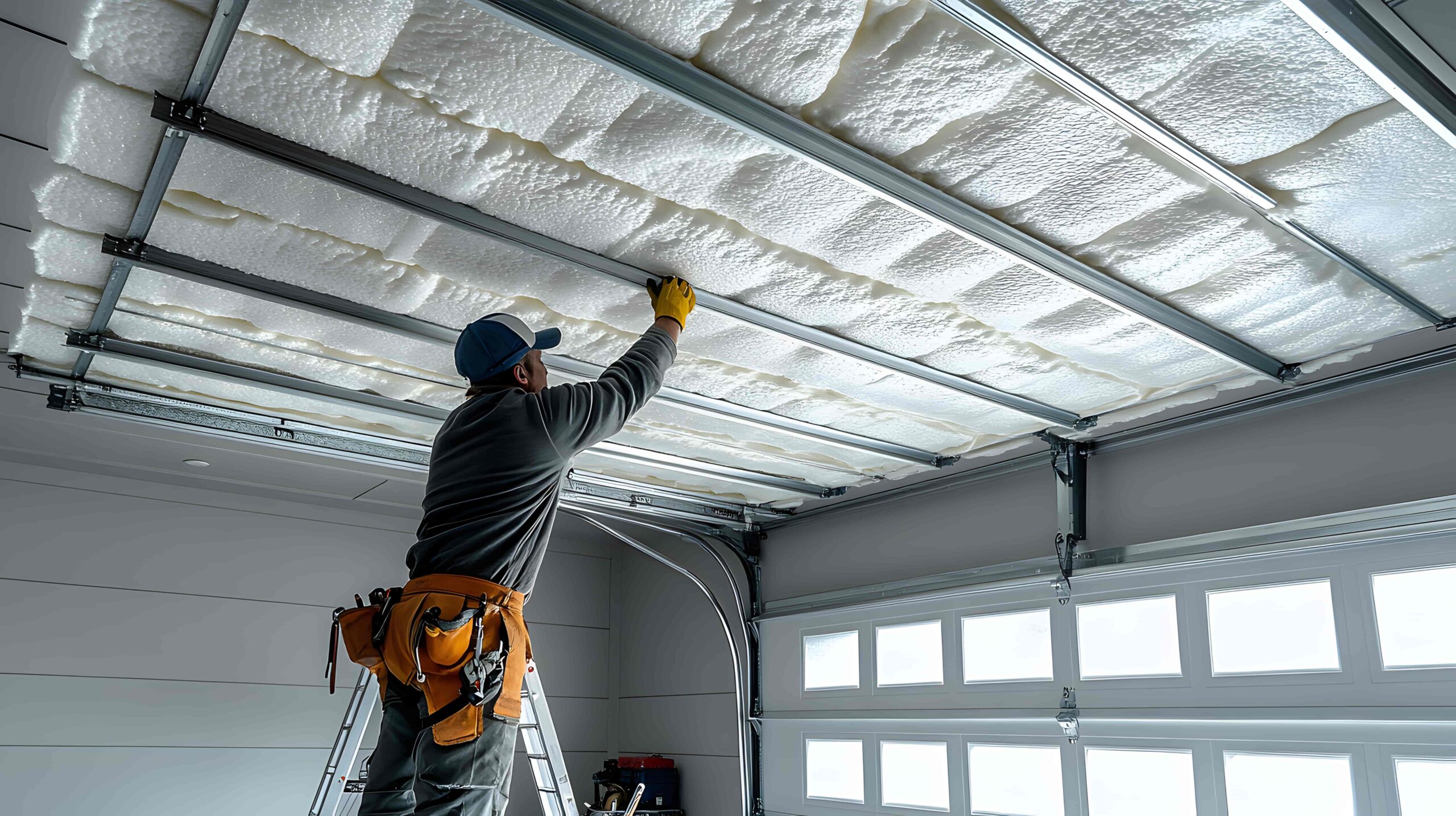
Takeaways
- Insulating your garage can improve comfort, save energy, and protect your stuff. Knowing the best, cheapest materials and fastest methods helps you pick what fits your budget, skill level, and goals.
- Fiberglass batts or rolls offer a cheap and DIY-friendly way to insulate walls and ceilings with moderate effort.
- Rigid foam boards deliver higher R-value per inch when space is tight and they help reduce heat transfer especially through ceilings.
- Spray foam (open- or closed-cell) gives the best air seal and performance overall but costs more and often requires professional installation.
- DIY garage door insulation kits or retrofits yield fast gains by sealing major thermal weak spots for low cost.
Does your garage feel like a sauna in summer and an ice cave in winter? If so, you’re not alone—and the solution often lies in proper garage insulation. This essential upgrade does more than just moderate temperatures; it boosts your home’s energy efficiency, reduces noise, and protects stored belongings. Done right, it can even turn your garage into a livable or functional workspace.
But where do you start? This guide covers the best, cheapest, and fastest ways to insulate your garage—covering walls, ceilings, and garage doors. As garage professionals, we want to help you make informed choices that suit your budget, timeline, and goals.
Why Should You Insulate Your Garage and What Are the Key Benefits?
Before diving into the “how,” let’s solidify the “why.” The benefits of insulating your garage includes:
1. Energy Savings
Perhaps the most significant benefit, this is especially critical for attached garages—insulation helps reduce heat transfer between the garage and your home, potentially lowering utility bills by reducing HVAC strain.
2. Year-round comfort
Proper insulation moderates extreme temperatures, making the garage more usable for hobbies or storage. This benefit is valuable even when insulating a detached garage, transforming it into a more functional space, specially in extreme climates.
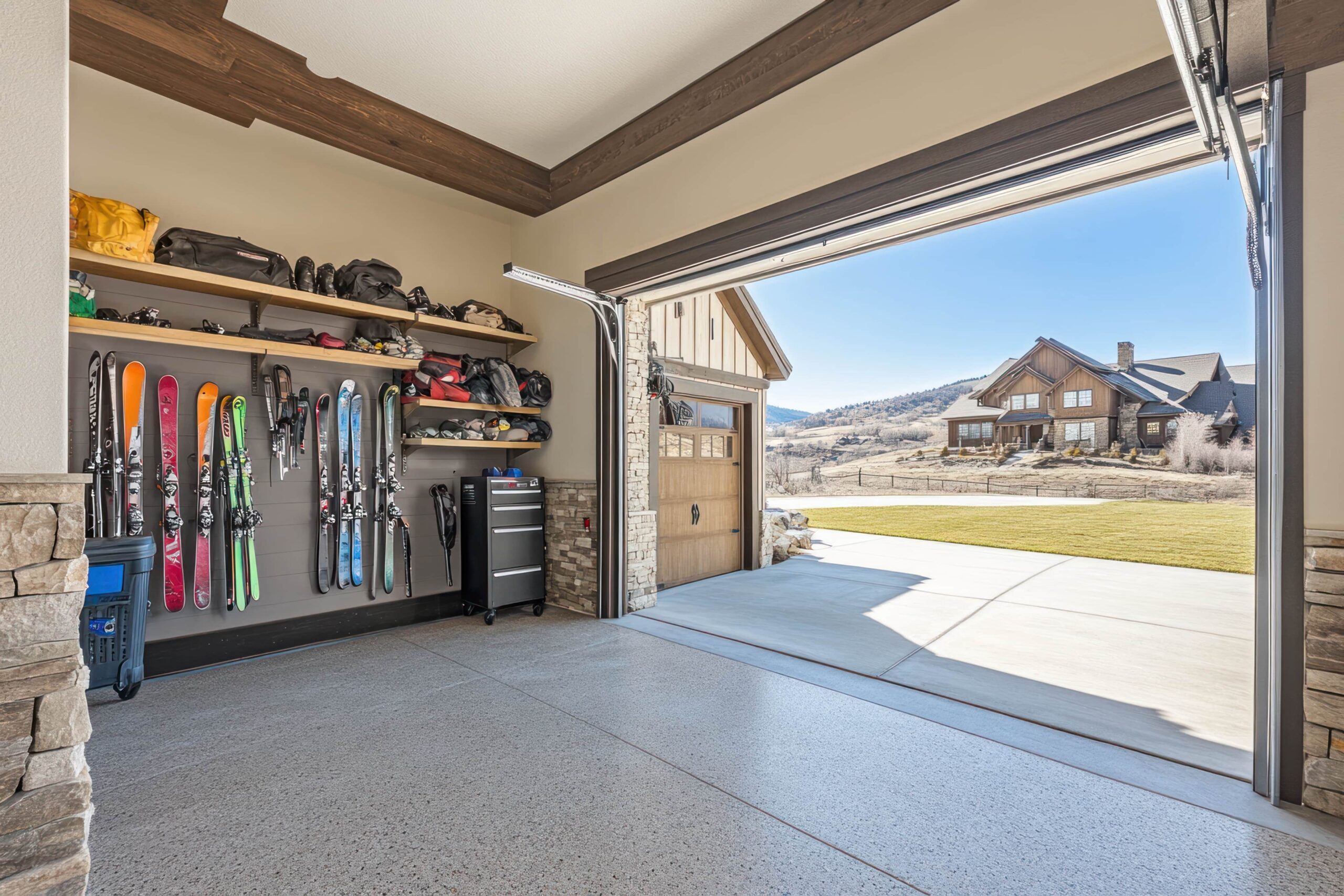
3. Noise reduction
Insulation absorbs sound, insulation materials inherently absorb sound waves, leading to a quieter garage and a more peaceful home environment.
4. Protection for belongings
Stable temperatures help prevent damage to vehicles, electronics, tools, and more.
To achieve these benefits, you need the right insulation, starting with understanding R-value.
What Does R-value mean?
Think of R-value as a measure of thermal resistance – basically, how well an insulation material stops heat from passing through it. The higher the R-value, the better the insulating power.
What R-Value Should You Aim for When Insulating a Garage in Utah?
It varies. For standard 2×4 walls, R-13 or R-15 is common. Ceilings, especially under living spaces or with attic access, might need R-30 to R-60 depending on your climate zone (check recommendations from sources like ENERGY STAR) and local building codes.
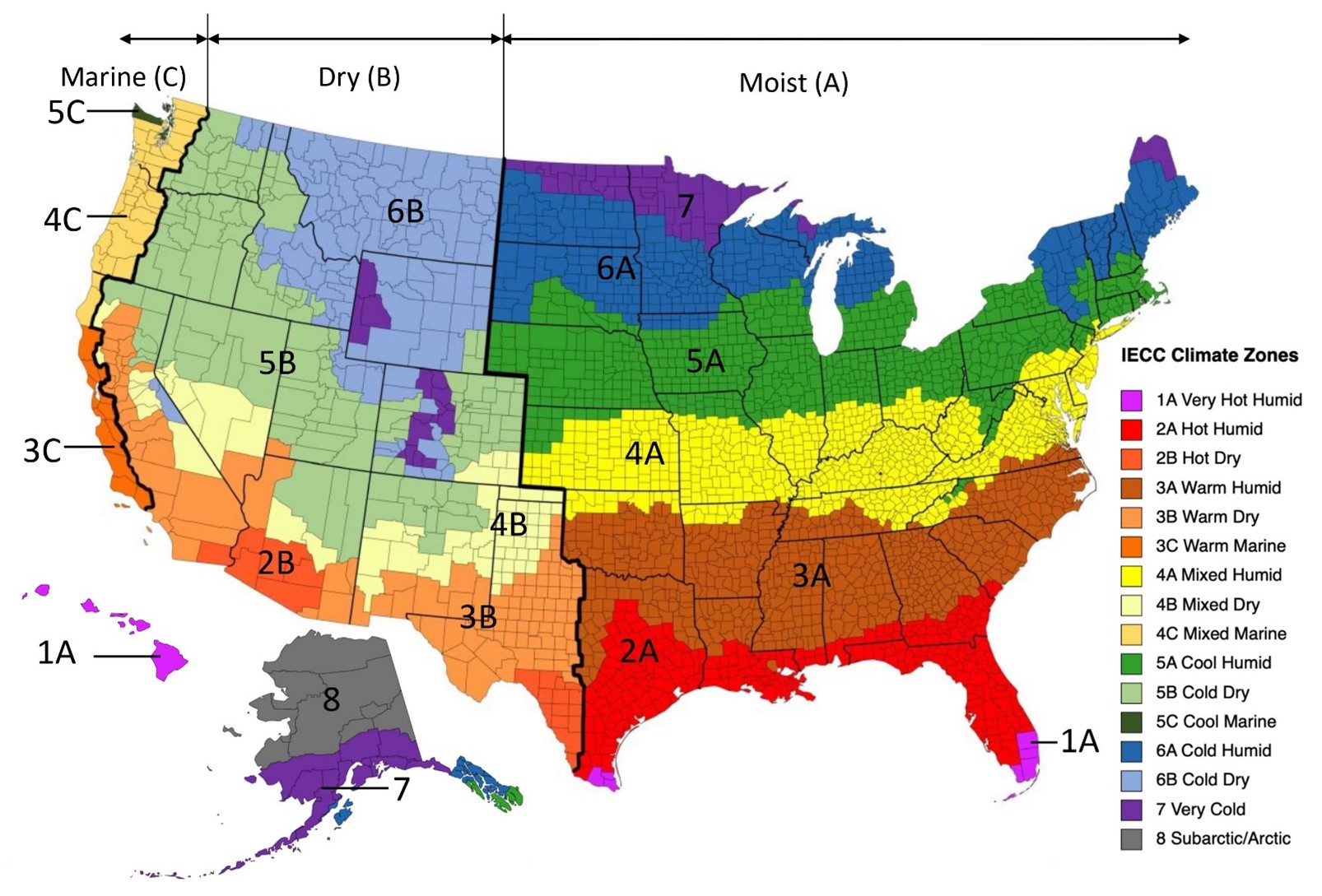
Garage doors themselves can range from R-8 up to R-19 or higher for specialized insulated models. Your specific needs also matter. The requirements for insulating an unheated attached garage might differ slightly from a heated one, focusing more on preventing temperature bleeding into the house.
Similarly, considerations for insulating unheated detached garage spaces often balance cost against the desired level of temperature moderation for storage or occasional use. Always check local recommendations and consider how you intend to use the space.
How to Insulate a Garage: Best Materials and Methods
Now that you understand the ‘why’ and the basics of R-value, you need to know the ‘how’ – the common materials and methods for insulating your garage.
Why Should You Start with Air Sealing Before Adding Garage Insulation?
Before you install any insulation, tackle air leaks. Use caulk or expanding foam to seal gaps and cracks around windows, doors, sill plates (where walls meet the foundation), ceiling fixtures, electrical outlets, and any vents or pipe penetrations. This simple step is vital because drafts can bypass even the best insulation, reducing its effectiveness significantly.
How Do You Insulate Garage Walls and Ceilings?
Here are the most common and affordable options for your garage walls and ceiling:
1. Fiberglass Batts or Rolls
Fiberglass insulation is considered to be the best insulation for garage walls. It’s one of the most popular and cheapest insulation materials, sold in pre-cut batts or long rolls sized to fit standard wood studs and joists. This makes it ideal for unfinished garages with open wall cavities.
- Pros: Budget-friendly, widely available at home improvement stores. Installing it between exposed studs is often considered an easy way to insulate the garage structure, making it a popular starting point when putting up insulation in the garage yourself.
- Cons: Can irritate skin and lungs during installation (always wear gloves, long sleeves, eye protection, and a mask!), loses R-value if compressed, and is vulnerable to moisture unless faced with a vapor barrier.
2. Rigid Foam Boards (EPS, XPS, Polyiso)
These dense boards come in various thicknesses and offer good insulation in a relatively thin profile. These are great for insulating walls and ceilings where space is limited.
- Pros: Higher R-value per inch than fiberglass, moisture-resistant, adds structural rigidity. Can be applied over drywall or directly to walls.
- Cons: Joints and edges need meticulous sealing (using compatible tape or spray foam) to prevent air leakage, generally costs more than fiberglass, and some types must be covered with a fire-rated material like drywall for safety if left exposed.
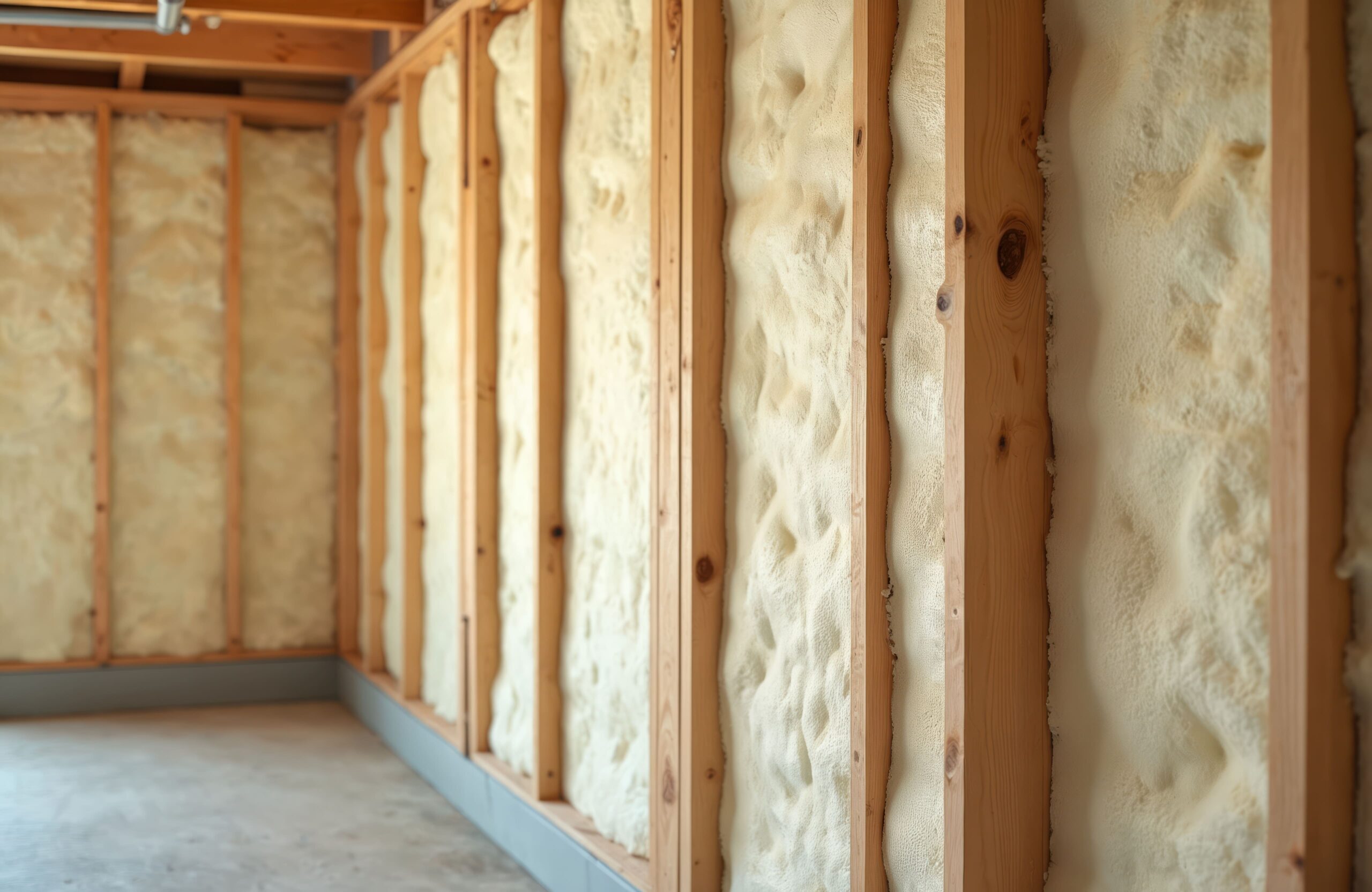
3. Spray Foam Insulation (Open-cell/Closed-cell)
Often seen as a premium option, often used in attics, ceilings, and metal garages. Spray foam is applied as a liquid that expands to fill cavities.
- Pros: It creates an exceptional air seal by filling every nook and cranny, providing high R-values. It adheres directly to surfaces and adds structural rigidity. Closed-cell spray foam is also highly moisture-resistant. Many consider it the best insulation method for overall performance, and it can be particularly effective as the best way to insulate a metal garage by preventing heat transfer through the metal framing (thermal bridging).
- Cons: It’s the most expensive insulation type upfront and requires professional installation due to the specialized equipment and safety procedures needed during application.
4. Cellulose Insulation (Blown-in)
Loose-fill insulation made from recycled paper treated for fire and insect resistance, cellulose is typically blown into enclosed cavities.
- Pros: Eco-friendly choice, conforms well around obstructions within wall cavities, effective sound dampening.
- Cons: Requires specialized blowing equipment (often rented or handled by professionals), needs a containing surface like drywall (not suitable for open stud bays), can settle over time if not densely packed, and can absorb moisture if not protected from leaks.
5. Blown-In Fiberglass
Similar to cellulose but made from fiberglass.
- Pros: Non-combustible, doesn’t settle as much, good for attics or enclosed cavities.
- Cons: Requires a blowing machine, best installed by professionals.
6. Reflective Insulation
Best as a supplement, especially in hot climates or for garage doors.
- Pros: Reflects radiant heat, easy to install, lightweight.
- Cons: Lower R-value on its own—best paired with another insulation type.
What Are the Best DIY Options for Insulating Existing Garage Doors?
You could perfectly insulate the walls and ceiling, but if your large garage door remains uninsulated, it acts like a thermal weak link, allowing significant heat transfer. Addressing the door is critical for effective garage insulation.
- Insulation kits: Many retailers offer kits specifically designed for garage doors. These usually contain pre-cut rigid foam panels, vinyl-faced fiberglass sections, or reflective foil layers, along with fasteners or adhesives.
- Adding rigid foam: You can purchase rigid foam boards and cut them yourself to fit snugly within the recessed panels of your existing door, typically securing them with construction adhesive compatible with both foam and your door material.
These methods are relatively inexpensive, can often be completed quickly, and provide a noticeable improvement in temperature stability. It’s typically considered a cheap way to insulate a garage door.
However, DIY applications add weight (which might require adjusting your garage door springs or opener settings for proper balance and safe operation), offer moderate R-values (typically R-4 to R-8), and won’t provide the same level of air sealing or durability as a purpose-built insulated door.
What Are the Benefits of Upgrading to an Insulated Garage Door in Utah’s Climate?
When is replacing your current door with a new, factory-insulated model the better investment? Consider upgrading if your existing door is old, damaged, unsealed, or if you want the best thermal performance and durability. The benefits include:
- Integrated high R-values (often R-9 to R-19+)
- Multi-layer construction (e.g., steel/insulation/steel) for strength and dent resistance
- Built-in weather seals for a tighter fit against the elements
- Often, significantly quieter operation

What Type of Insulation for a Garage Is Best, Cheapest, or Fastest to Install?
With an understanding of the materials and methods, how do you choose the right strategy for your garage? It often comes down to balancing performance goals, budget, time, and whether you prefer a hands-on approach or professional execution.
1. Best overall performance
If maximum energy efficiency, comfort, and a truly sealed environment are your top priorities, the best way to insulate a garage often involves a combination of high-performance materials.
This could mean professionally installed closed-cell spray foam or meticulously sealed rigid foam boards in walls and ceilings, coupled with a high R-value, factory-insulated garage door for a complete thermal envelope.
2. Cheapest approach
Working on a tighter budget? A cheap way to insulate a garage focuses on essential steps with lower-cost materials. Start with thorough air sealing (a low-cost, high-impact step). Then, consider installing DIY fiberglass batts in accessible open walls and ceilings and applying a DIY insulation kit to your existing garage door. While not offering peak R-values, this approach delivers noticeable improvement at a minimal cost.
3. Fastest method
Need quick results? For unfinished garages with open framing, installing DIY fiberglass batts can be relatively fast, as well as applying a DIY garage door insulation kit. However, for complex jobs like spray foam application or installing a completely new insulated door system correctly, hiring professionals is often the fastest route to a finished, high-quality result.
Ready for a Better Garage Experience?
Investing in garage insulation is key for boosting your home’s comfort and energy efficiency. Your ideal approach, whether that’s balancing cost, performance, or speed, will depend on your specific budget and goal or whether tackling simpler insulation steps yourself fits your comfort level.
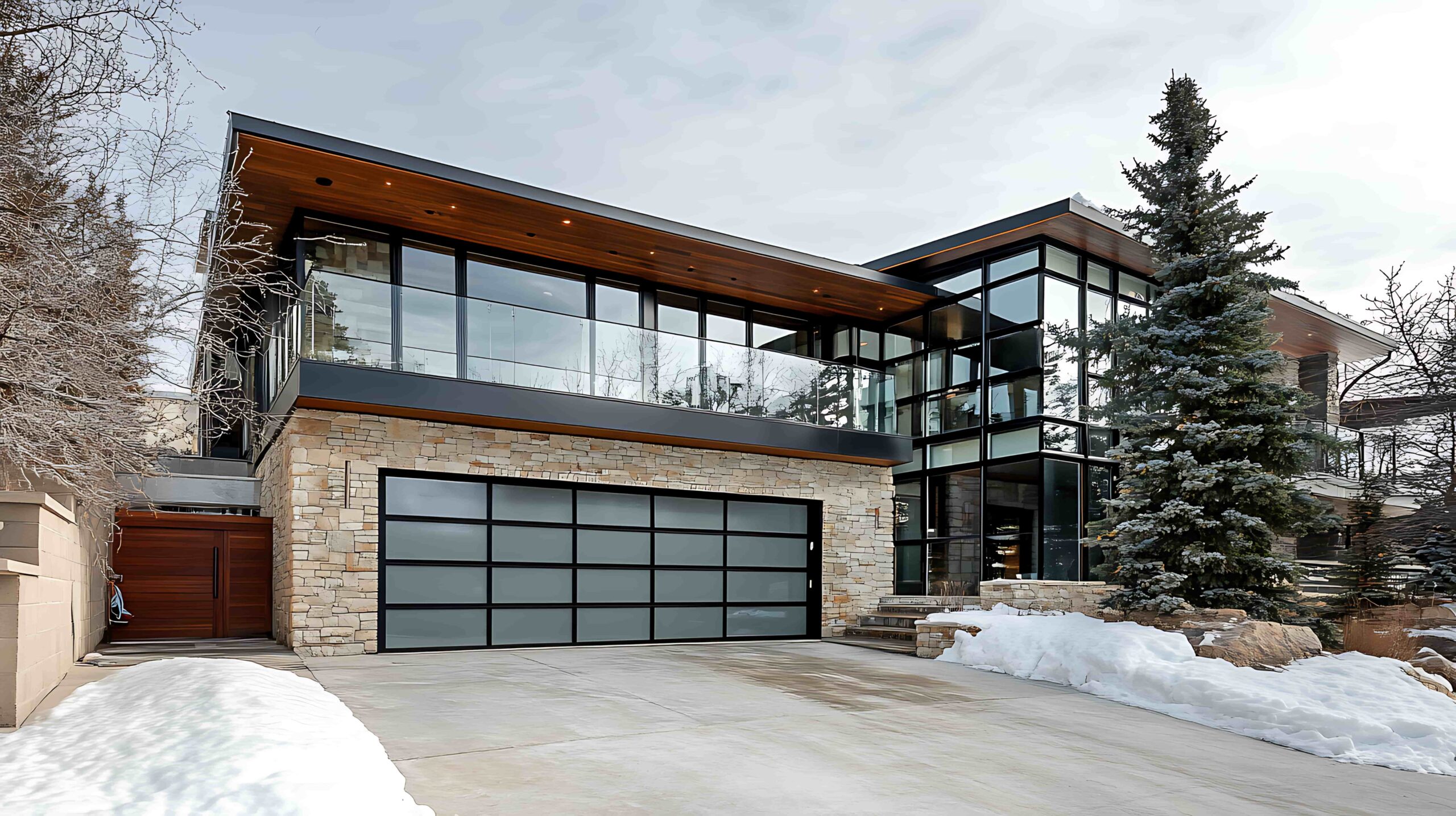
Don’t underestimate your garage door’s impact; achieving the best long-term thermal performance for residential garage doors may involve considering a full garage door replacement with a modern, insulated model.
While DIY kits offer basic improvements, ensuring optimal results, addressing specific needs—like the best insulation for either an attached or detached garage—or executing a flawless new garage door installation truly benefit from professional expertise.
Ready to upgrade? At Mountain State Garage Doors, we help homeowners make informed decisions. For expert advice or professional garage door services in Utah, contact our team today to discuss your project and schedule a consultation!
- Garage Door Cracks: Causes, Repairs, and When to Replace - November 27, 2025
- Noisy Garage Door? Diagnosis, Fixes, and When to Call a Pro - November 26, 2025
- How to Repair Garage Door Dents: Fixes vs. When to Call a Pro - August 22, 2025
